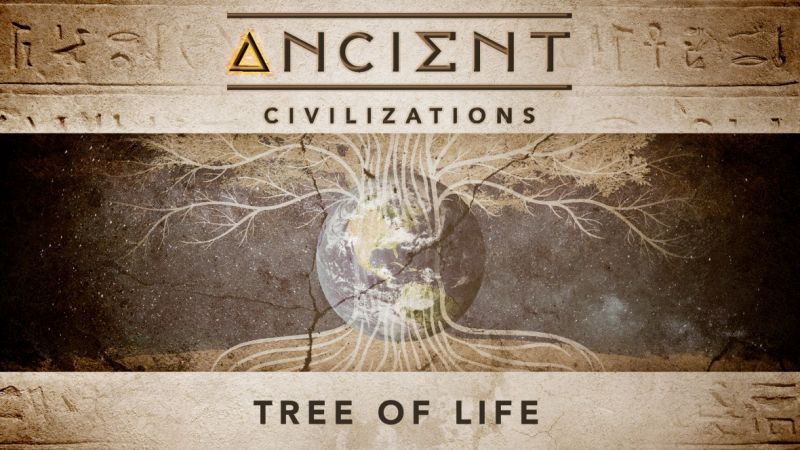Ancient Civilizations – Tree of Life: We explore the tree of life, as it is conceptualized in many ancient civilizations to discover that it is much more than a pervasive myth. Explore mysteries of the ancient world from symbols left by Atlantis to mysterious power sources, trace the lineage of humanity through giants and elongated heads, seeking the deepest secrets of our hidden past.
Since times immemorial, humankind has searched for the answers to who we are, where we came from and why are we here. Embedded into ancient mythology and our forgotten history, is a code which unlocks our connection with transcendence and paves the way for a new golden age.
Ancient Civilizations – Tree of Life
The tree of life is a fundamental archetype in many of the world’s mythologies, religious, and philosophical traditions. It is closely related to the concept of the sacred tree. The tree of knowledge, connecting to heaven and the underworld, and the tree of life, connecting all forms of creation, are both forms of the world tree or cosmic tree, and are portrayed in various religions and philosophies as the same tree.
Various trees of life are recounted in folklore, culture and fiction, often relating to immortality or fertility. They had their origin in religious symbolism. According to professor Elvyra Usačiovaitė, a “typical” imagery preserved in ancient iconography is that of two symmetrical figures facing each other, with a tree standing in the middle. The two characters may variously represent rulers, gods, and even a deity and a human follower.
The Assyrian tree of life was represented by a series of nodes and criss-crossing lines. It was apparently an important religious symbol, often attended to in Assyrian palace reliefs by human or eagle-headed winged genies, or the King, and blessed or fertilized with bucket and cone. Assyriologists have not reached consensus as to the meaning of this symbol. The name “Tree of Life” has been attributed to it by modern scholarship; it is not used in the Assyrian sources. In fact, no textual evidence pertaining to the symbol is known to exist.
In Chinese mythology, a carving of a tree of life depicts a phoenix and a dragon; the dragon often represents immortality. A Taoist story tells of a tree that produces a peach of immortality every three thousand years, and anyone who eats the fruit receives immortality.
An archaeological discovery in the 1990s was of a sacrificial pit at Sanxingdui in Sichuan, China. Dating from about 1200 BCE, it contained three bronze trees, one of them 4 meters high. At the base was a dragon, and fruit hanging from the lower branches. At the top is a bird-like (Phoenix) creature with claws. Also found in Sichuan, from the late Han dynasty (c 25 – 220 CE), is another tree of life. The ceramic base is guarded by a horned beast with wings. The leaves of the tree represent coins and people. At the apex is a bird with coins and the Sun.




